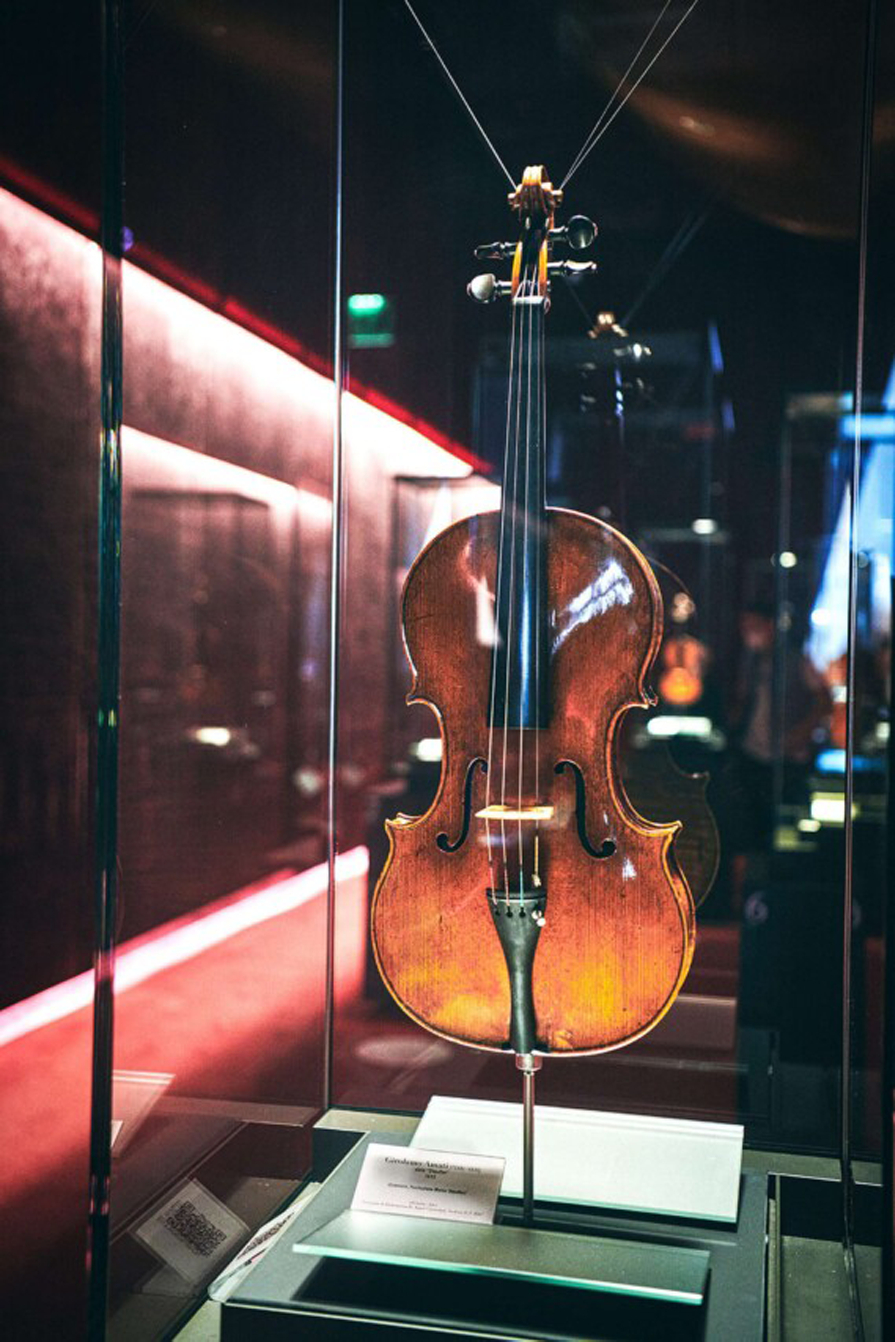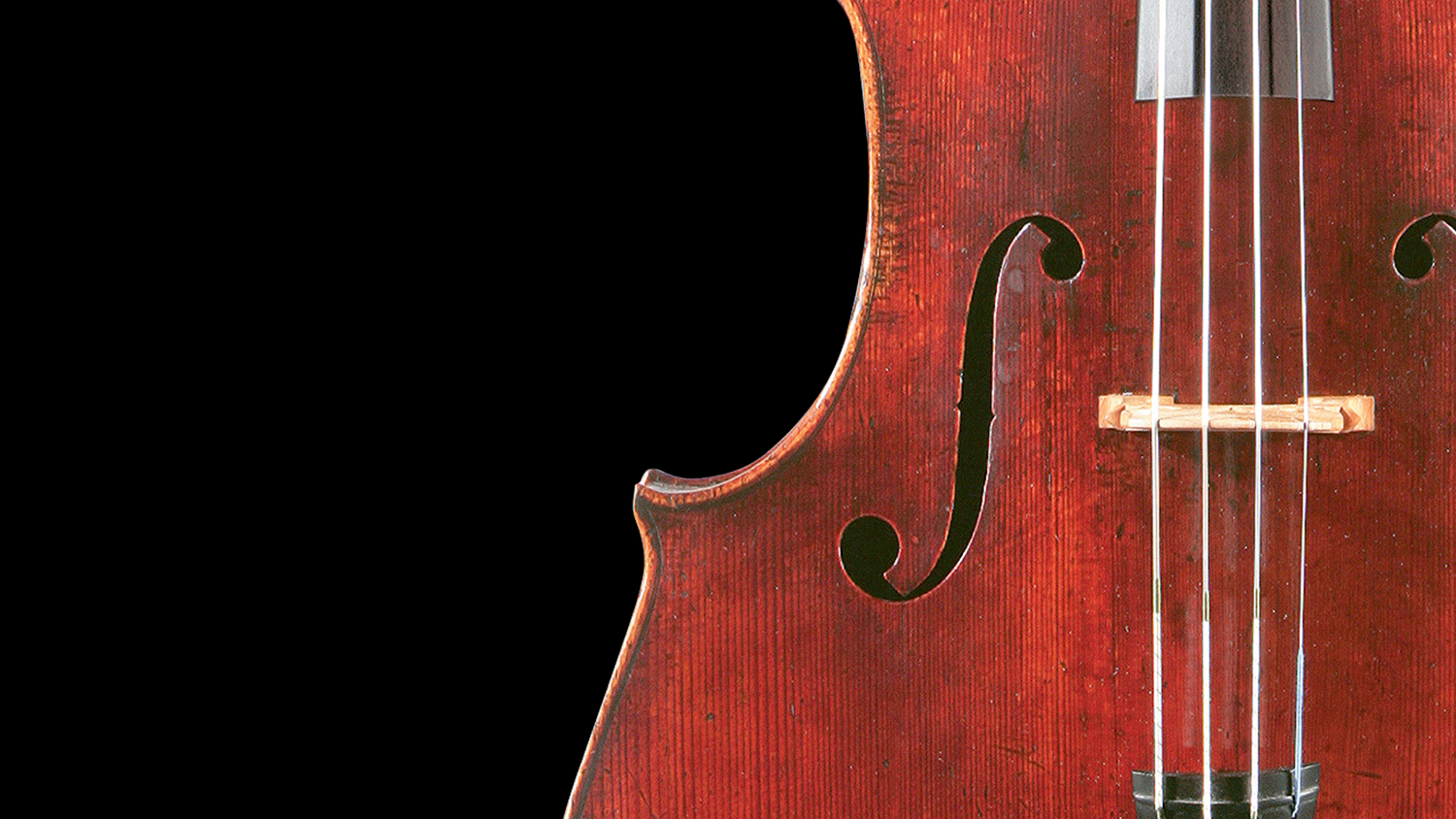Stauffer Collection

The Stauffer Foundation has a collection of musical instruments of extraordinary value.
These masterpieces are the most representative of the tradition and the excellence of Cremonese violin making: the “Stauffer” violin by Bartolomeo Guarneri del Gesù from 1734, the Enrico Ceruti violin from 1868, the “Stauffer” viola by Andrea Amati from 1615, and the “Stauffer – ex Cristiani” cello by Antonio Stradivari from 1700.
The four instruments are on loan to the “Antonio Stradivari” Violin Museum in Cremona, of which the Stauffer Foundation is a founding member, one of the most important museums in the world dedicated to the art of violin making, an UNESCO intangible cultural heritage.
It is a well-preserved violin, attributable to the second period of the Cremonese master’s production.
From 1972 to 1977 the violinist Pinchas Zukerman used it for concerts and recordings.
The back is in one piece of radial cut maple. The table, made of red fir, has medium-sized grain.
The paint is orange-yellow on a golden background.
It was acquired by the Foundation in 1980.
LABEL
Joseph Guarnerius fecit Cremona, anno 1734
CERTIFICATE OF AUTHENTICITY
John and Arthur Beare London, 24 April 1980
MEASURES
Total length = 583
Length of the vibrating string = 325
Diapason = 191.5
Enrico Ceruti
Violin, 1868
The violin is original in all its parts, including the label. The state of conservation is excellent. A particularly interesting detail is the setting of the handle not yet fitted into the upper block.
The back is made of two pieces of tangentially cut maple. The spruce board has grain of variable width. The paint is an orange color with a golden brown undertone.
It was acquired by the Foundation in 2003.
LABEL
Enricus Ceruti fecit Cremonae anno 1868
MEASURES
Total length = 580
Vibrating string length = 324
Diapason = 194
It is one of the very first examples of an alto viola, more manageable than the tenor viola. It is finely crafted and in an excellent state of preservation. Equipped with a wide sound, it has a remarkable balance between the four strings. The back is in one piece of radial cut maple. The table, made of spruce, has a well-defined grain. The paint, all in its original state, is a beautiful golden brown colour. It was acquired by the Foundation in 1996.
LABEL
Antonius & Hieronymus Br. Amati Cremonen. Andreæ fil. F. 1615
CERTIFICATE OF AUTHENTICITY
W. E. Hill & Sons London 19 December 1962
MEASURES
Total length = 668
Vibrating string length = 376
Diapason = 225
The peculiarity of this cello, exceptionally well preserved, is that it serves as a junction between the larger form, in use up until that time, and the form B (smaller), much easier for the performer.
It is a well-balanced and powerful instrument. The back is made up of two pieces of maple, cut radially. The belly, of spruce, is in two symmetrical pieces. The varnish is a beautiful brownish-red colour over a golden ground layer.
It was acquired by the Foundation in 2005.
LABEL
Antonius Stradivarius Cremonensis Faciebat Anno 1700
CERTIFICATE OF AUTHENTICITY
W. E. Hill & Sons London April 1936 / John & Arthur Beare 8 November 2005
MEASURES
Total length = 1235
Vibrating string length = 705
Diapason = 417
